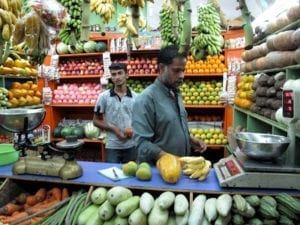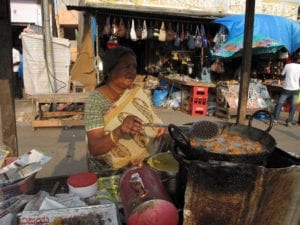Hannah Harpole
Bern, Switzerland
 |
| “Chai” photo by Hannah Harpole |
My hippie parents indulged me as a picky eater. At two I proclaimed I was a vegetarian. Around the age of four, I survived solely on yogurt, refusing all other nourishment. I do not exactly know when this morphed into a combination eating disorder of occasional bulimia with a full count of calories, and rejection of anything that had fat or I deemed fattening. I imagine that my aspiration to be a ballerina and also being five foot ten inches contributed.
I have an abnormally thin father. I am not certain what his metabolism is made of, but this six-foot six-inch tall man has a hard time maintaining one hundred and seventy pounds. I managed to hide my disorders behind this, never letting it get to a place where I had to be admitted to a hospital.
Somewhere in my early twenties I got tired of the constant vigilance. I decided that ballet was probably not for me. I started dancing barefoot and more often at raves. I decided I wanted a degree and found that the energy needed to maintain my dietary regimen and also get perfect straight A’s was exhausting. I began to indulge in late night mozzarella sticks with a side of ranch while I pulled all night cram sessions.
I was no longer my father’s metabolism twin. My mother, with her hippie sisters, had embraced a philosophy of body acceptance. After four children and a job that required her to get up at 4AM, her body had a completely different response to food than my father’s. Everything she ate tended to stick with her, adding to a naturally curvy figure. By the time my siblings and I were preteens we knew the best way to get under her skin was to call her fat.
Mother and daughter relationships can be complicated, and ours was no different. While my mother had embraced body acceptance, she was a long way from internalizing it. My mother was the first one who pointed out to me that I was now also tipping the scales. I still remember my mortification when my fat mother suggested I was also becoming fat.
 |
| “Vegetables” photo by Hannah Harpole |
With diligence I dived into graduate school and a full time job after finishing a double major in three years. My graduate degree would be paid for as long as I committed to teach. It seemed like I blinked and was on the eve of thirty: unhappy, unhealthy, and exhausted.
The exact events that contributed to buying a ticket to India and quitting my job mid-way through the school year are complicated: the city was trying to close the school I worked for, a student exposed himself to me, and the principal was angry that I then called the police. My passport with visa was ready for pick up in two days.
I did not think before my departure that India was perhaps the ideal country for someone who had been a self-proclaimed vegetarian since the age of two. I awoke my first morning in Gujarat after taking a local train from Mumbai to discover patra, a leaf rolled with chickpea flour inside it, coconut flakes, and then fried. This with fresh lime, or lemon in India, became one of my favorite foods. I also tasted chai for the first time. Chai, a concoction of millions of variants and always too full of sugar, with each family having its own personal recipe, became my constant as I travelled through India.
In Rajasthan a taxi driver grabbed something being sold in newspaper from a road vendor and decided that I needed one as well. Thus began my love affair with lemon rice, which is prepared with peanuts, coriander, turmeric, and squirted with lemon. If you have never had lemon rice in Rajasthan in the back of a taxi at dawn you have not lived.
In Goa I discovered the joy of fresh coconuts. I also started dancing again. I danced under a Banyan tree. I danced under the stars next to the sea. I slept in a hut. I had fresh papaya every morning. I swam in the sea. I began to feel happy.
 |
| “Delicious Fat” photo by Hannah Harpole |
In Tamil Nadu I discovered dosa and found out I have a high tolerance for spice. These thin pancakes made from fermented rice and lentils reminded me of childhood crepes. I devoured them, loving the crispness. I was made fun of by the cook where I stayed for wanting them outside of the traditional breakfast hours. He called me Dosa Queen.
In Karnataka I bought idli on the street for two cents and discovered Ashtanga yoga. I was suddenly moving as much on this trip as I had ten years earlier as a professional ballerina. One afternoon sitting in a café I overheard someone saying they were studying Ayurveda. I had read earlier in a yoga text about this ancient science of health and was intrigued. I interjected myself into the conversation and had a chai date scheduled for the next day to learn more.
Ashtanga yoga attracts many former dancers and gymnasts. I quickly became aware in snippets of conversation that the old demon of disordered eating was very present. Yogis in cafes would demand foods that were dairy free, gluten free, and sugar free in a country that still was struggling with malnutrition. I knew I needed to address this part of my own story to not succumb to the comfort of an old addiction.
My appointment for chai turned out to be life changing. Ayurveda views the world through three doshas. When these are unbalanced we become unhealthy. I found that the focus was not so much on the physical look of the body but on the mind and energy. This made sense after my own experience of disordered eating, of knowing that my body and mind were sluggish when I overindulged or was not eating nourishing foods.
After reading my pulse, my chai mate suggested foods that I could integrate instead of eliminate. She also suggested that part of the reason I felt healthy in India was because I was allowing myself to eat fat for the first time in twenty years. Ayurveda embraces fat as being pivotal to digestion, the nervous system, cellular regeneration, and hormone regulation.
I continued on my journey, getting what a fellow traveler and I named “mud butt” on the Ganges in Rishikesh, then being treated to a savory snack on a roof as the sun set in Haryana. Hiking from Dharamkot to Dharamasala to eat the best momos with an astonishing view of a pristine mountain along the roadside. Finally, starting to feel homesick in Menali, seeking out chocolate chip cookies, and knowing I was ready to leave India.
What India did for me was to normalize my relationship to food. Everywhere I went I was treated to a feast of vegetarian options, which took the pressure off eating. I just ate when I felt hungry. When I was ready, India gave me a teacher who in one afternoon over tea introduced me to Ayurveda and the medicine of food that made sense, after spending the first thirty years of my life fighting with it. Most importantly, India and her foods gave me back my energy and happiness.
HANNAH HARPOLE grew up on the west coast of the United States, attended college in New Mexico, and moved to New York City for graduate school. She has traveled extensively leading retreats that incorporate yoga and teach the principles of Ayurveda. She resides in Bern, Switzerland.

Leave a Reply